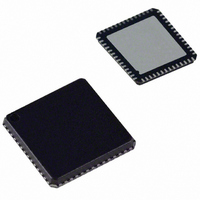AD8190ACPZ-R7 Analog Devices Inc, AD8190ACPZ-R7 Datasheet - Page 21

AD8190ACPZ-R7
Manufacturer Part Number
AD8190ACPZ-R7
Description
IC,Telecom Switching Circuit,LLCC,56PIN,PLASTIC
Manufacturer
Analog Devices Inc
Datasheet
1.AD8190ACPZ-R7.pdf
(24 pages)
Specifications of AD8190ACPZ-R7
Applications
*
Mounting Type
Surface Mount
Package / Case
56-LFCSP
Lead Free Status / RoHS Status
Lead free / RoHS Compliant
For Use With
AD8190-9880/PCB - KIT EVAL FOR AD8190 & AD9880
Lead Free Status / RoHS Status
Lead free / RoHS Compliant
Available stocks
Company
Part Number
Manufacturer
Quantity
Price
Part Number:
AD8190ACPZ-R7
Manufacturer:
ADI/亚德诺
Quantity:
20 000
This 50 pF limit includes the HDMI connector, the PCB, and
whatever capacitance is seen at the input of the AD8190, or an
equivalent receiver. There is a similar limit of 100 pF of input
capacitance for the CEC line.
The parasitic capacitance of traces on a PCB increases with
trace length. To help ensure that a design satisfies the HDMI
specification, the length of the CEC and DDC lines on the PCB
should be made as short as possible. Additionally, if there is a
reference plane in the layer adjacent to the auxiliary traces in
the PCB stackup, relieving or clearing out this reference plane
immediately under the auxiliary traces significantly decreases
the amount of parasitic trace capacitance. An example of the
board stackup is shown in Figure 33.
HPD is a dc signal presented by a sink to a source to indicate
that the source EDID is available for reading. The placement of
this signal is not critical, but it should be routed as directly as
possible.
SILKSCREEN
LAYER 1: MICROSTRIP
PCB DIELECTRIC
LAYER 2: REFERENCE PLANE
PCB DIELECTRIC
LAYER 3: REFERENCE PLANE
PCB DIELECTRIC
LAYER 4: MICROSTRIP
SILKSCREEN
Figure 33. Example Board Stackup
3W
RELIEVED UNDERNEATH
REFERENCE LAYER
MICROSTRIP
W
3W
Rev. 0 | Page 21 of 24
When the AD8190 is powered up, one set of the auxiliary inputs
is passively routed to the outputs. In this state, the AD8190
looks like a 100 Ω resistor between the selected auxiliary inputs
and the corresponding outputs as illustrated in Figure 27. The
AD8190 does not buffer the auxiliary signals, therefore, the
input traces, output traces, and the connection through the
AD8190 all must be considered when designing a PCB to meet
HDMI/DVI specifications. The unselected auxiliary inputs of the
AD8190 are placed into a high impedance mode when the device
is powered up. To ensure that all of the auxiliary inputs of the
AD8190 are in a high impedance mode when the device is
powered off, it is necessary to power the AMUXVCC supply as
illustrated in Figure 28.
In contrast to the auxiliary signals, the AD8190 buffers the
TMDS signals, allowing a PCB designer to layout the TMDS
inputs independently of the outputs.
Power Supplies
The AD8190 has five separate power supplies referenced to
two separate grounds. The supply/ground pairs are:
AVCC/AVEE, VTTI/AVEE, VTTO/AVEE, DVCC/DVEE,
and AMUXVCC/DVEE.
The AVCC/AVEE (3.3 V) and DVCC/DVEE (3.3 V) supplies
power the core of the AD8190. The VTTI/AVEE supply (3.3 V)
powers the input termination (see Figure 25). Similarly, the
VTTO/AVEE supply (3.3 V) powers the output termination
(see Figure 26). The AMUXVCC/DVEE supply (3.3 V to 5 V)
powers the auxiliary multiplexer core and determines the
maximum allowed voltage on the auxiliary lines. For example,
if the DDC bus is using 5 V I
connected to +5 V relative to DVEE.
In a typical application, all pins labeled AVEE or DVEE should
be connected directly to ground. All pins labeled AVCC,
DVCC, VTTI, or VTTO should be connected to 3.3 V, and
Pin AMUXVCC tied to 5 V. The supplies can also be powered
individually, but care must be taken to ensure that each stage of
the AD8190 is powered correctly.
2
C, then AMUXVCC should be
AD8190







